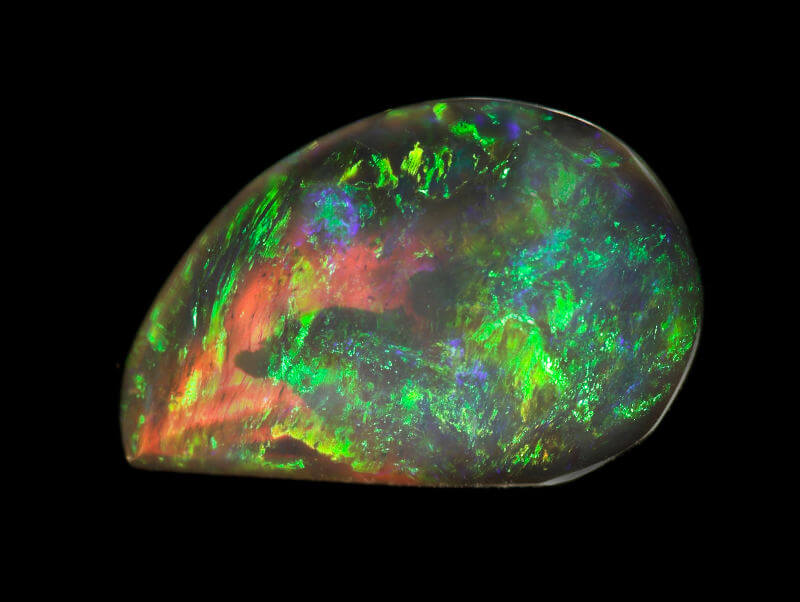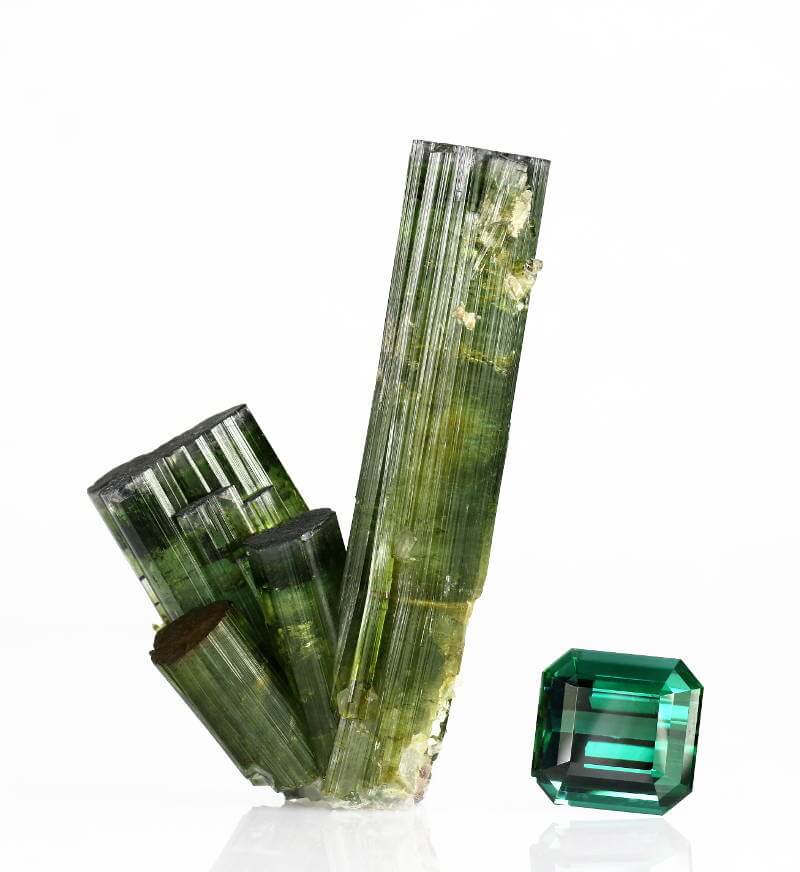October Birthstone
- Home /
- Birthstones by Month /
- October Birthstone
What is The Birthstone of October?
Shimmer, glam, a dash of hope and mesmerizing beauty, these are just some of the things that can be said about October’s birthstones; the Opal and Tourmaline. Though the two stones have very different origins, they share quite a lot; both have been mistaken for other precious stones, both fascinated European authors during the 18th and 19th century, and last, the stones have reclaimed their worth and bacme cherished gems in the 20th century. For those who seek inspiration and charm, October Birthstones are luring like no other.
The Story of Opals
The opal, the traditional October birthstone, is considered to have an amorphous character, chemically, color-wise, symbolically, even its origin seems to be debatable to this day. Different history books allegedly refer to the stone, but the first reference to it was found in a text by the Roman scholar Pliny from 75 AD. The source of the name of the stone is also somewhat obscure. While certain researchers contend that the Sanskrit word upala (meaning ‘precious stone’) is the origin, others assert that it is in fact from the ancient Greek word opallios, which translates to “seeing color”. To make matters more complex, there have also been scholars who believe the name has something to do with different variations of the ancient English word “opaque”.

Opal - October Birthstone
This uncertainty and air or mystery that shrouded the stone’s history, as well as its ever-changing shades, are perhaps some of the reasons that for many centuries, the stone was falsely believed to bring bad luck. The main catalyst was a novel published in 1829 and written by Sir Walter Scott. The portrayal of the stone in his book as associated with demonic spirits, destroyed the gem’s reputation and consequently, its market throughout Europe. Furthemore, royalty, such as the wife of Napoleon III, refused to wear it.
A black opal found 50 years later in Australia is what had revived the opal market as well as redeemed the stone’s infamous reputation. Thus, wearing opals is a renewed practice, one which revives Medieval traditions. Nowadays, opals are mostly mined in Australia and are commonly given on the 14th year of anniversaries as they represent restored hope, innocence, beauty, and of course, love.
Myths and Legends
As expected of a gem with bluish whitish shades, the ancient Greeks believed that the gem resembled an eye, and therefore, opals had the power to offer prophecies. Though the stones reminded them of eyes, they believed them to be tears that had dropped from the God of gods himself, Zeus. These were, however, tears of joy which he had shed when he defeated Titans in battle.
Its association with eyes had been widespread into the Middle Ages in which the stones were believed to heal different eye conditions. The therapeutic powers were allegedly activated when a person would wear the stone as a good luck charm. Some even thought that the stone could also protect the mind from evil spells, dementia and other ails that concern one’s mind.
The Story of Tourmalines
Though the tournalime’s background is not as enigmatic as its fellow October birthstone, it still has a fascinating story to tell. Believed to have been discovered in the 15th century in Brazil, the gem was confused with a wide array of other precious stones, the most common of which was the emerald. Yet, the tourmaline’s name derives from the word turmalli, which was the name in Sinhalese for a variety of colorful gems originating from the Indian Subcontinent. But whether Brazilian or Indian, the many colors of the tourmaline have intrigued cultures far and wide throughout the centuries. For instance, the pink tourmaline was believed to cure anxieties and provide courage.
 Tourmaline Crystals and Gem
Tourmaline Crystals and Gem
It wasn’t until the beginning of the 19th century, with the uprising of mineralogy, that the American Tiffany’s gemologist discovered that the many tourmalines they possessed were not in fact emeralds and rubies, but rather a different kind of stone altogether. It was then, with this newfound discovery, that deposits of the stone were found throughout the US, mainly in California. The tourmaline was marketed as the new type of gem, one that was coveted and desired by the wealthier classes.
There was one particular noblewoman who craved the gems, their pink and red forms specifically, she was the Chinese Dowager Empress Tz'u Hsi. Many of the San Diego tourmaline deposits were used exclusively by the Chinese royalty, who wished to have the stone set in every piece of jewelry and finery she had. Of course, due to her fondness of the stone, it became extremely popular throughout China. Some of these artifacts are currently displayed in different museums dedicated to the Chinese history and dynasty. Furthermore, thanks to its association with the Empress, it was desired by many 19th and early 20th century actors, artists and other esteemed personas.
Myths and Legends
To this day, tourmalines are thought to have the most impact when used by different spiritual leaders. They are known to be “receptive stones”, which are considered to draw energies to themselves of a nurturing, soothing, mothering and healing kind. These stones are also used to increase love, wisdom, fertility, compassion, growth and kindness. Last but not least, spiritually, the stone is assumed to promote communication with higher levels of self and other spiritual and divine beings.
If you seek for clairvoyance, or a portal into the realms of spirits and godliness, the opals and tourmalines have a lot to offer. But of course, if you simply seek the beauty of their irresistible hues, you’ll find that they both live up to their reputation and so much more…
